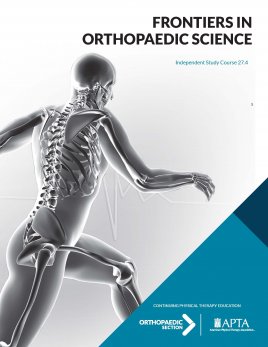
Frontiers in Orthopaedic Science
| Online Only | Online + Hard Copy | |
|---|---|---|
| APTA Orthopedics Member | $115 | $140 |
| Non-APTA Orthopedics Member | $265 | $290 |
Course Description
This monograph series introduces the reader to the emerging fields of regenerative medicine and sensor technologies and their role in advancing orthopaedic rehabilitation. Experts in each of these areas share their insight on what the future holds and how it can impact physical therapy practice and rehabilitation. A review of the biology underlying tissue injury and repair are covered along with the role stem cell therapy can provide. Specific technology applications are provided for telehealth and virtual reality.
Course Overview
Course Format: Online with an option to purchase the print version
Contact Hours: 15 contact hours
State Approval: AOPT courses are accepted in all states plus the District of Columbia, as allowed by the type of course requirements in state regulations. A small number of states require APTA to seek pre-approval of courses. The approval codes for these states can be found here. Always check with your State Licensing Board to confirm contact hours offered.
View Full State Approval InformationCourse Objectives
- Describe the primary stages and timeframes for tissue healing following injury.
- Discuss the role of the inflammatory process in optimizing recovery.
- Discuss local and systemic factors impacting tissue healing.
- Describe the structure of peripheral nerves.
- Explain the repair and regeneration process following nerve injury.
- Discuss the importance of Schwann cells in repair and regeneration of peripheral nerves.
- Cite 3 fields of study that can successfully merge engineering technologies with physical therapy.
- Understand the different types of sensing technologies and their potential role in rehabilitation.
- Define robotics and describe the opportunities and challenges of using robots in physical therapy.
- Describe how engineering technologies are expanding physical therapy practice.
- Describe the fundamental biology of a stem cell and therapeutic applications of stem cells.
- Describe the underlying technologies used to engineer tissue.
- Discuss cellular therapeutics and the impact on treatment of orthopaedic conditions.
- Cite current evidence for the use of regenerative medicine technologies in orthopaedic clinical practice.
- Provide examples of telehealth applications and evidence supporting its use in musculoskeletal rehabilitation.
- Provide examples of virtual reality applications and evidence supporting its use in musculoskeletal rehabilitation.
- Discuss practical strategies for implementing telehealth into musculoskeletal rehabilitation.
- Discuss the practical considerations for implementing virtual reality into musculoskeletal physical therapist practice.
- Provide recommendation and future directions for telehealth and virtual reality with advances in te
Topics and Authors
- The Science of Neuromuscular Healing
Andrew Piraino, PT, DPT, OCS, CSCS - Interfacing Engineering Technology and Rehabilitation: A New Frontier for Physical Therapy
Randy Trumbower, PT, PhD; Denise M. Peters, PT, PhD; Steven L. Wolf, PT, PhD, FAPTA - Regenerative Medicine
Nana Takenaka-Niganawa, PT, PhD; Akira Ito, PT, PhD; Tomoki Aoyama, MD, PhD - Telehealth and Virtual Reality in Musculoskeletal Practice
Alan C. Lee, PT, PhD, DPT, CWS; Judith Deutsch, PT, PhD, FAPTA
Add To Cart
Which version of the course would you like to purchase?
Members Only
You need to be a member to buy this course.
Join today to enjoy exclusive deals and prices on all courses.
Join Now